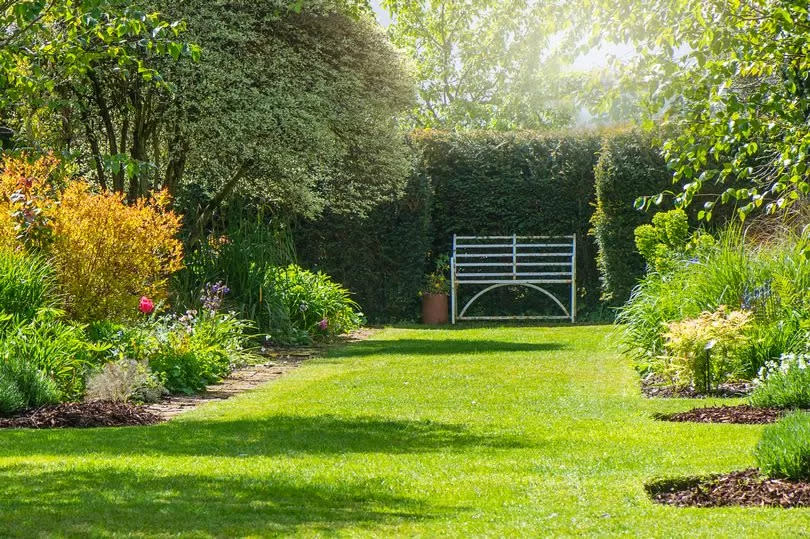Gardening expert shares 'no dig' trick to transform heavy clay soil into healthy lawn

Green-fingered enthusiasts struggling with heavy clay and waterlogged lawns have been offered a 'no dig' trick that promises to transform gardens into fertile havens.
Clay soil, while nutrient-rich, poses a challenge for gardeners due to its dense nature, which makes it hard to work with and slow to warm up, often hindering plant growth, according to the Royal Horticultural Society (RHS). The fine mineral particles in clay give it a sticky, smooth texture that can impede drainage, leading to soggy gardens.
Ecologist and botanist Becky Searle has shared her top tips for revitalising your garden's soil. On TikTok, where she posts as @sowmuchmore, the green guru shared: "Over the next few months, I'm going to be doing something of an experiment into a no dig lawn in my garden."
She elaborated on the issue at hand, saying: "My garden has a serious problem in that the lawn is built on heavy clay soil with very little topsoil. Even though there are drainage systems underneath the lawn, when it rains the water just stands on the surface and it creates a really boggy, slippery, sticky area where no plants can grow. This isn't very pleasant for any of us."
Becky took to her TikTok account to show her step-by-step guide on how to help improve poor drainage in your lawn, reports the Mirror.
In the video, she can be seen spreading earth over her garden with a rake and said: "So here I am, spreading one and a half dumpy bags of council green waste over my lawn to add some organic matter."
The ecologist explained how the method encourages the soil to come to the surface to "feed" on the organic matter.
Becky added: "As it comes to the surface and goes back down again having eaten, it'll open up pores in the soil and this will help aerate the soil and it'll help to improve the drainage."
The RHS has backed this technique, adding that the compost improves the soil's structure, aeration, and biodiversity while also aiding in draining heavy clay soils.
The ecologist concluded that the task was "not really an experiment" because she had worked on similar lawns in the past and is "confident" the process will be successful once more.
Better Homes and Garden suggests starting the task by using a tiller to loosen the soil and spreading around two inches of compost on top of the soil and work that in.
It is advised that this process is repeated two more times. The helpful site then explained that regular applications of organic matter would improve your soil's structure, tilth, and overall health.
Several followers flocked to the comments section of Becky's video to share their responses, as one user penned: "I am very interested how this turns out. I have a lawn with poor drainage, just turns boggy with heavy rain."
Another user advised: "I would recommend adding some sand, the sand breaks up the clay soil. You need to add it in spring and autumn for a few years."
Becky countered with her own experience: "Sand can be awful on clay, it turns it into concrete. I've got quite a lot of experience using this method on lots of types of soil."
Weeks later, a curious user enquired: "Has the grass poked through yet? Thinking of doing mine but have dogs so wonder how long I'd have to wait before leaving them back on."
To which Becky excitedly responded: "Yes! Almost have a full lawn now."
Don't miss the latest news from around Scotland and beyond. Sign up to our daily newsletter.

 Yahoo News
Yahoo News 
